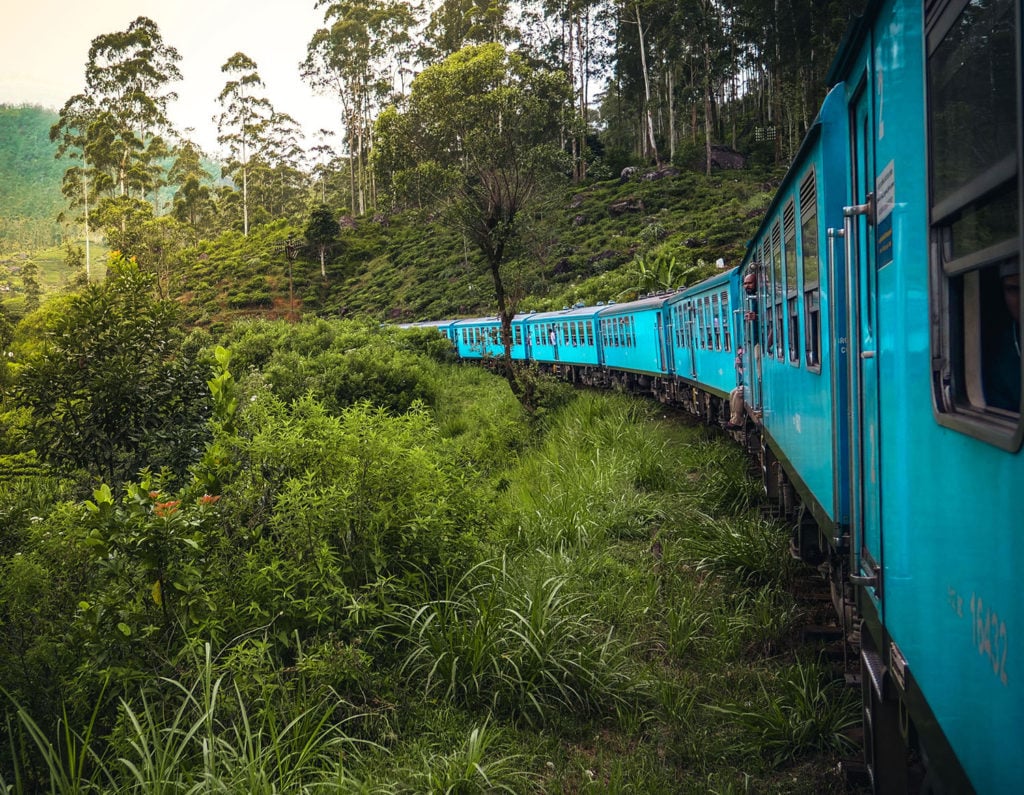
Situated within the Indian ocean, just to the south of India is Sri Lanka. This unique island is bursting with culture, is home to some of the best food I have ever tried and is coated with gorgeous landscapes, from tropical forests to golden beaches. It is a country that I knew very little about prior to visiting and which completely exceeded my expectations.
I visited Sri Lanka for 10 days and planned a journey that looped around the south of the island, journeying into Sri Lanka’s highlands, stopping off for safaris as well as visiting some of Sri Lanka’s most gorgeous beaches.
This 10 day itinerary is perfect for those who want a taste of Sri Lanka and all it has to offer but without moving at break-neck speed. I believe this itinerary is the perfect balance between being on the go whilst ensuring you don’t burn out.
Before we dive in to my itinerary, let’s take a look at some essential information about visiting Sri Lanka. Alternatively, you can use the table of contents below to jump right to the itinerary!
What is the Best time of Year to Visit Sri Lanka?
The best time of year to visit southern Sri Lanka (including the Capital of Colombo) is between October and March. Between April and September it is monsoon season for this region. Whilst temperatures are similar year-round, you are more likely to experience sunshine outside of monsoon season.
The best time to visit Sri Lanka’s highlands (including Kandy and Ella) is March. The wettest months for visiting this area are October and November.
Therefore, if you want the best weather for this itinerary, visit between January and March.
Do I Need a Visa to Visit Sri Lanka?
Yes, you do! You can apply for your Sri Lankan visa easily online here. I strongly recommend applying for your visa well in advance of your trip.
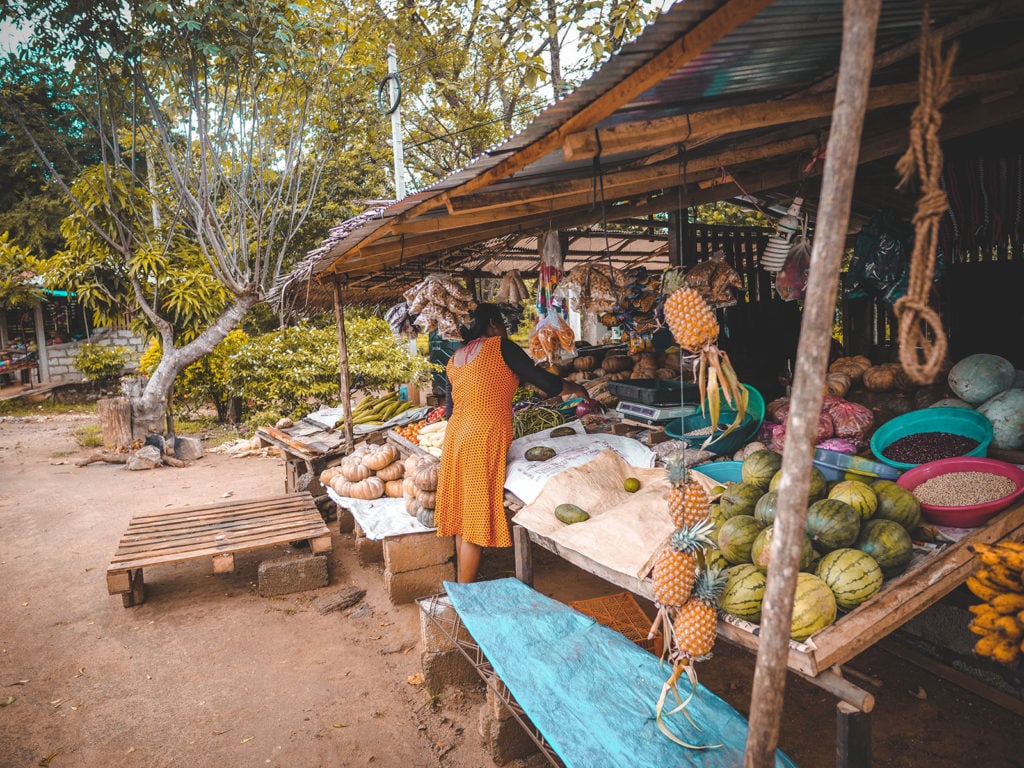
What is the Currency in Sri Lanka?
The currency in Sri Lanka is the Sri Lankan Rupee. It’s a closed currency which means you sadly cannot pre-order any in your home country before your trip.
Many expenses in Sri Lanka require cash (such as tuk-tuks) so it is advisable to withdraw some rupees at the soonest opportunity.
There are currency exchange desks in the airport but do be aware that these will not have the best rates. For better rates you can seek out an ATM instead which can be found in any city or town.
I personally withdrew some cash at the airport for ease. Plus I needed to pay for a taxi to my first accommodation. You may wish to withdraw a small amount at the airport to see you through until you encounter an ATM.
What Should I Wear in Sri Lanka?
Sri Lanka is a religious country. As of 2012 70% of the country practise Buddhism, 12% practise Hinduism and 10% practise Islam. It is therefore respectful and appreciated if you dress modestly.
There are no fixed rules about dress outside of the religious temples, but my best advice would to be mindful of the local culture and dress appropriately for where you are and your activity.
In busy towns or on public transport I kept my dress modest. I wore a T-shirt (covering my shoulders) and long trousers (elephant pants to be exact). This felt appropriate.
On the beach however, I was more relaxed, wearing a bathing suit for bathing and shorts and a T-shirt or a dress when wandering around the sand.
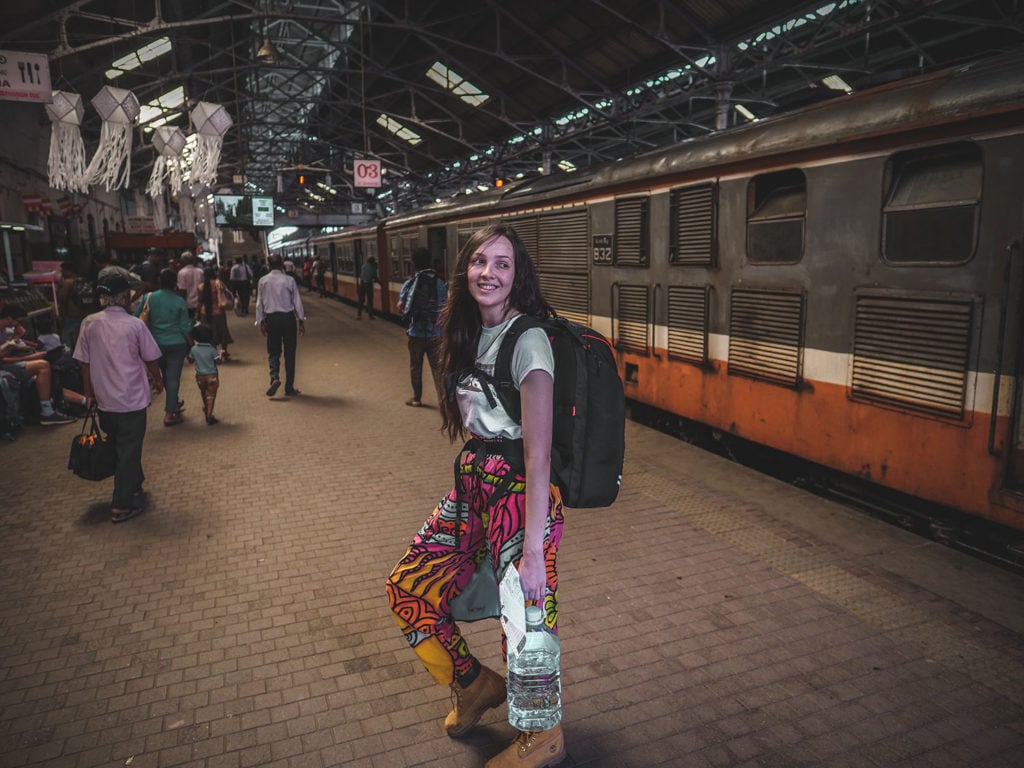
How Do I Travel to Sri Lanka?
There are many airlines that fly to Sri Lanka. I flew with Qatar Airways after a layover in Doha (Qatar) and would recommend them.
All flights arrive at Bandaranaike International Airport which is situated 30 minutes north of the capital city of Colombo.
How Do I Get Around Sri Lanka?
I would recommend using public transport to see Sri Lanka.
The roads are chaotic. Our taxi drivers frequently ran through red lights, cars would overtake without warning, cows would wander across the road at times, people would suddenly start crossing busy roads. You’re probably starting to get the picture.
As well as the impracticality of hiring a car, public transport in Sri Lanka is fun to take. I’d even go as far to say that it’s part of the Sri Lankan experience.
There are several options of public transport. You can take taxis, tuk-tuks, buses or trains. I’ll go into my recommendations in more detail in my itinerary.

The Perfect Sri Lanka 10 Day Itinerary
Day 1: Negombo
All international flights into Sri Lanka arrive at Bandaranaike International Airport which is situated just outside of Negombo city. Travelling can be tiring so my best advice would be to stay in Negombo city for one night after arriving on the island for Negombo is only a few minutes away from the airport.
Negombo is a good place to start your journey as the city is not as large or chaotic as the capital of Colombo (1 hour south), giving you a perfect introduction to Sri Lankan life. The city contains everything from long sandy beaches, shrines and temples to admire and even a large lagoon called Negombo Lagoon which is a haven for wildlife.
From Negombo, you can also head out to yoga and nature retreats if you want a chill time in Sri Lanka.
Getting from the Airport to Negombo
It is a roughly 15 minute drive from the airport to Negombo city (exact times vary depending on which part of the city you are travelling to). There are no shortage of taxis waiting outside the airport who are keen to give you a lift. Do be aware however that these taxis are expensive.
Instead I would recommend pre-booking a taxi. This is a great way to compare rates before your journey and ultimately choose the best company. Not only will you likely save money this way, it makes getting from the airport to your next destination far more relaxing as your ride will already be waiting for you, saving you the hassle of haggling for a ride after a long flight.
I pre-booked a ride from the airport with my accommodation host. It was a service which they offered and when I looked at the price, I decided it wasn’t too bad. Ultimately, I probably could have got a cheaper ride with a taxi company but decided to book the option that felt like the right combination of ease and cost. As my ride was with my accommodation host, there was no chance of him getting lost trying to find the location. This also meant that I didn’t need to pay immediately, allowing myself time to withdraw cash from an ATM to pay for my ride when it was more convenient for me.
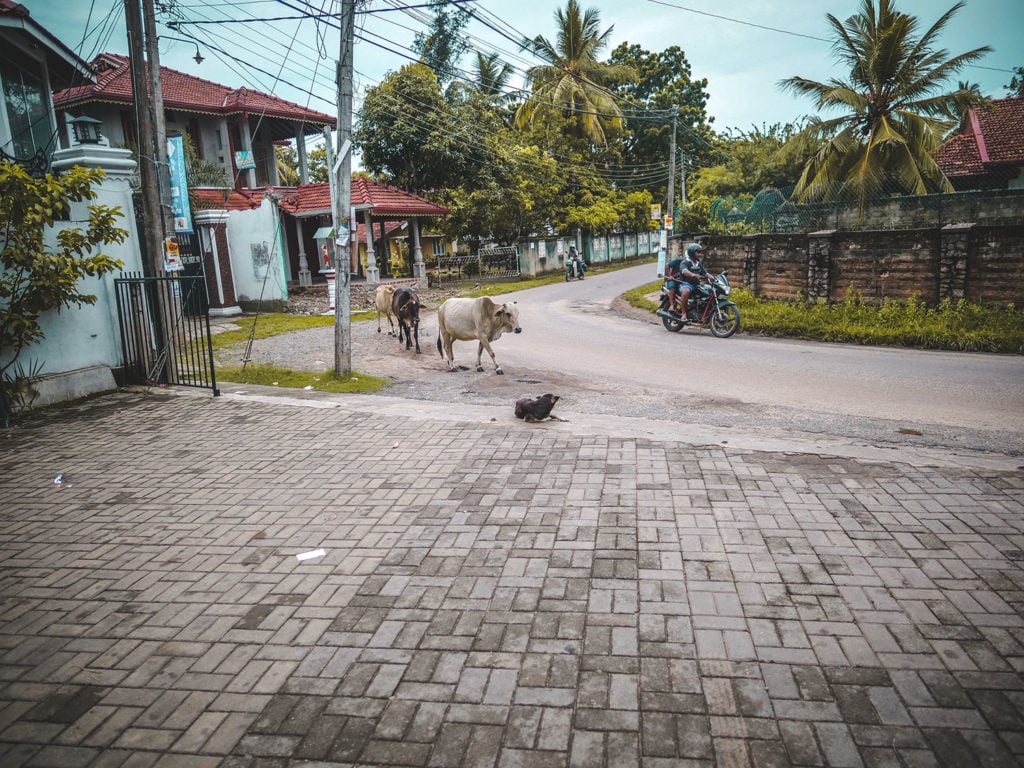
Where to Stay in Negombo
There are countless hotels and apartments which you can stay at in Negombo. I opted to stay in a homestay which I found through Airbnb for less than £30 a night.
I was very nervous of the concept of staying within a family’s home but was thrilled with my decision once I arrived. Staying in a private room within the house of a Sri Lankan family was a great way to try local cuisine and find out recommendations for the area and Sri Lanka as a whole. If you would like food included in your stay, definitely find out if this is a service that is offered as only some homestays provide this service.
What to do in Negombo
If your flight arrives in Sri Lanka in the morning (like mine did), then you will have the entire day to explore Negombo.
There are countless things to do in this city, as my host explained to me. The most popular activities involve visiting Negombo beach, a long stretch of coastline where you can see small fishing boats with beautiful sails.
Fishing is a key aspect of Negombo. It is a fishing city and as a result there are several fish markets including the ‘Lellama’ fish market (the second largest in Sri Lanka) which you can visit. Trying fresh fish in Sri Lanka is a must if you are into fish! Some restaurants and homestays will happily cook a dish including a fish which you have purchased at the fish markets, creating a meal for you to remember. Even if you are not interested in purchasing fish, the market is a great place to meet local fishermen, learn about how the fish is caught and prepared and find out more about how the fishing industry affects the lives of those in the city.
For those interested in history, there are numerous churches that you can visit throughout the city – 25 to be exact. These Catholic churches date back to the Portuguese-era in Sri Lankans history. Negombo has even been given the nickname ‘Little Rome’ to reflect this. To this day a large portion of people in Negombo are Christian.
If you are interested in nature, a visit to Negombo Lagoon may be more up your street. The lagoon is fed by number of narrow rivers and the Dutch canal (a canal constructed by the British as a trading route). A narrow channel in the north of the lagoon links it to the ocean. Mangrove swamps and marshes surround the lagoon, home to a host of wildlife including an array of bird species.
Negombo lagoon is also a great place to watch local fishermen take to the lagoon in wooden canoes, using traditional fishing methods.
You can take boat tours out onto the lagoon.

Day 2: Colombo to Kandy
Start the day with a taxi ride from Negombo to the capital city of Colombo which is roughly an hour south. It is ideal to have your taxi arrange beforehand as today we will be taking the train from Colombo Fort station to Kandy and it is important not to miss the train!
As with my airport pick-up, I arranged my ride through my accommodation host. However, there are numerous taxi companies that you can choose from to book your ride.
Trains from Colombo to Kandy are fairly regular throughout the morning. The earliest train is at 5:55am and the latest morning train is at 10:35 am. Trains in the afternoon are far less frequent and I would not recommend them for this itinerary. For up to date train times, this website is very informative.
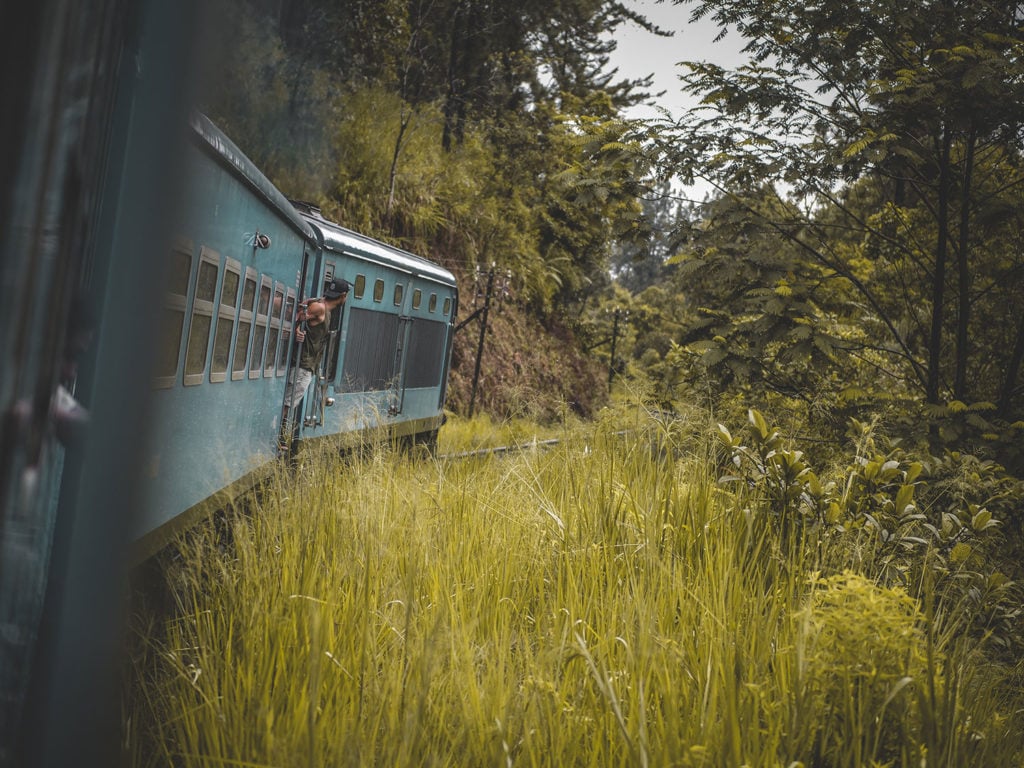
A Guide to Booking Trains in Sri Lanka
Trains can be booked either online or at the station before departure. There are pros and cons to each option.
Benefits of booking a train ticket online:
- Your ticket is guaranteed. Sri Lankan trains are very popular so can fill up quickly. There is no guarantee that if you try to purchase a ticket on the day that there will be any available.
- You have more options. Booking in advance means you can choose which class to travel in. if you try to book on the day however, there may only be limited options left and you may end up in an undesirable class for your needs. We’ll talk more about the different classes in a moment. As well as class options, you will have more options in terms of train times, booking yourself on at the perfect time for you.
- It’s a more relaxing experience. There’s no need to worry about any of the above issues as you already have your ticket. As a result you can take the day more in your stride.
Benefits of booking a train ticket on the day:
- It’s far cheaper. If you book a ticket online it will be roughly £12 per person. In contrast, unreserved tickets (those you purchase on the day) cost more like £2 per person.
- The online booking website can be temperamental. There is only one website where you can book your tickets and it’s this one. At the time of writing, the website doesn’t know which trains have sold out so you could purchase a train ticket only to be informed a few days or weeks later that the ticket isn’t available and receive a refund. It’s not ideal.
It’s important to note that if a train is sold out online it does not mean that the entire train is sold out, only the reserved tickets which are a handful of tickets which can be purchased beforehand. There will still be a chance that you can purchase unreserved ones on the day.
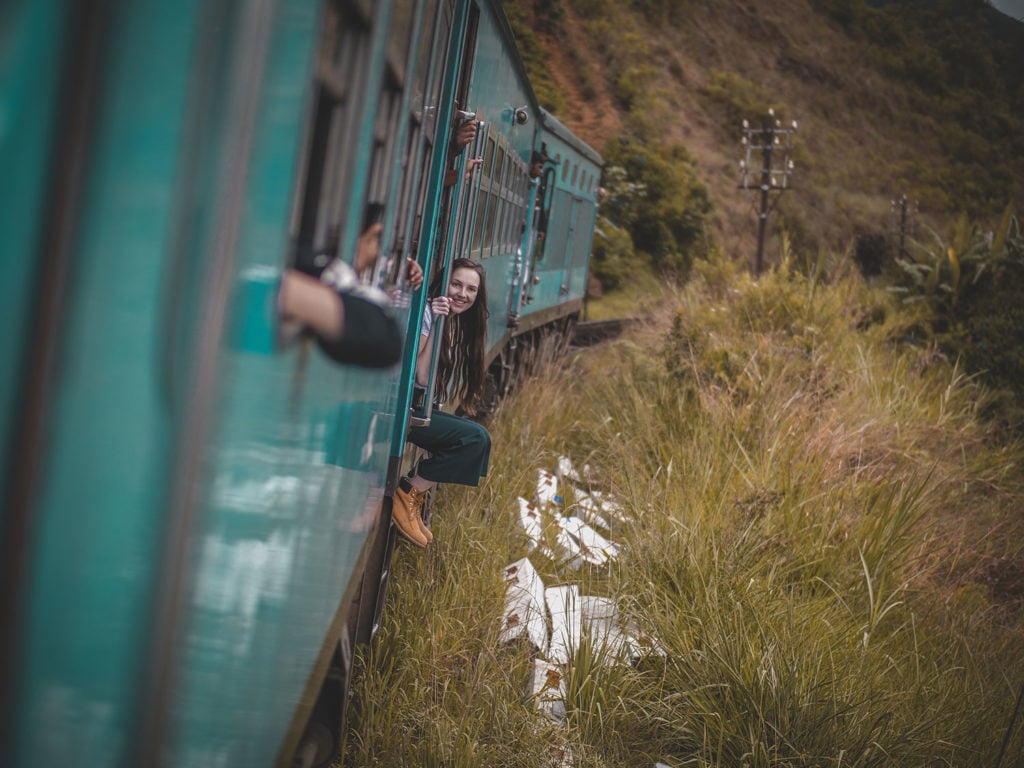
A brief explanation of Sri Lanka train classes:
There are four classes to choose from when booking your seats: first, second, third and the observation class (only available on some trains). In my opinion, there is no best class to choose from. They all have something unique to offer.
First Class: These carriages are right at the front of the train. They are air-conditioned and the windows do not open.
Second Class: These carriages are in the middle of the train. They have small ceiling fans and the windows open. This was my personal favourite carriage.
Third Class: These carriages are at the back of the train. Windows also open here. This class is the busiest class and a seat is not guaranteed which can be challenging if you are on a journey of several hours. Animals are also allowed in third class.
First Class Observation: Only available on the older trains this carriage is right at the back of the train and has rear windows which look over the track, allowing for wonderful views.

When to Arrive in Colombo
If you would like some time to explore Colombo city, arrive in Colombo a couple of hours before your train departure.
Colombo is a sprawling city with a range of sights to see. However, it isn’t for everyone (as my host made clear, expressing his dislike of his country’s capital), hence why I opted to give this city a miss when I visited Sri Lanka.
If you do want to see some of Colombo, the area around Colombo Fort station is a great area to explore. This is the central business district of Colombo and is home to some historical buildings and monuments (like the Lighthouse Clock Tower) as well as numerous cafés and restaurants.
Be careful when in Colombo. Scams (which can happen in any country) are more likely to take place in built-up areas such as the capital. This article has some useful information on scams in Sri Lanka and how to avoid them.
I’d recommend arriving at Colombo Fort Station at least 45 minutes before your train is due to depart. If you have pre-booked your train ticket you will still need to report to the tourism office at the station to have your tickets printed. This can take some time, especially if the office is busy. I had to queue for a good 15 minutes.
The Colombo to Kandy Train
The train from Colombo to Kandy takes roughly 3 hours. It’s a scenic ride which passes through rice paddies before entering Sri Lanka’s highlands. The view of forests and mountains are stunning.
For a detailed write-up of my experience with the Colombo to Kandy train, you can read my blog post here.
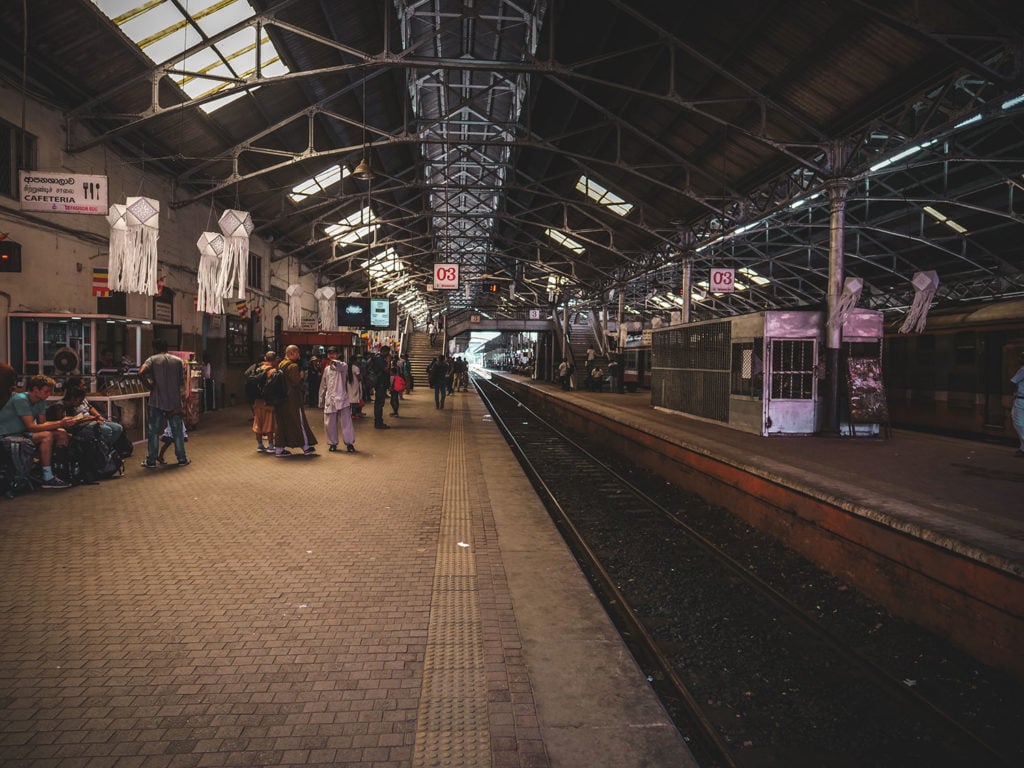
Where to Stay in Kandy
Once you reach Kandy, there is a whole host of options in terms of accommodation. There are countless hotels and guesthouses available.
I stayed in a homestay on the outskirts of Kandy city, on the opposite bank of the Mahaweli river which is in fact the longest river in Sri Lanka. I opted for a peaceful location with stunning views. The accommodation was lovely and the views did not disappoint but there were certainly drawbacks to being so far away from the centre such as the fact that there were no restaurants within walking distance, and it was tucked down a quiet road away from any passing tuk-tuks. It is also debatable whether peace and quiet is possible with accommodation in Sri Lanka as the sounds of arguing dogs stopped me getting more than a couple of hours sleep here.
Things to do in Kandy
Taking a morning train from Colombo ensures you arrive in Kandy down with a good part of the afternoon to explore this cultural city.
Surrounded by mountain ranges and tea plantations, Kandy is a city of significant cultural history. It is the second largest city on the island after Colombo and is the capital of the central district in Sri Lanka.
There are plenty of things to do in Kandy.
One of the main attractions in Kandy is the Temple of the Sacred Tooth which is a temple that is home to the relic of the tooth from the Buddha. The tooth has political history as it was believed that whoever holds the relic holds the governance of the country.
Other popular activities include visiting the Botanical Garden, famous for housing over 4,000 species of plants and trees, seeing Kandy Lake and roaming the streets of Kandy, trying some of the gorgeous food.

Things NOT to do in Kandy – Pinnawala Elephant Orphanage
Many tourists take a day trip from Kandy to Pinnawala Elephant Orphanage, a place which advertises itself as being a safe haven for orphaned or mis-treated elephants.
Sadly, Pinnawala Elephant Orphanage is anything but a safe home for elephants. Elephants at this zoo (it is a zoo not a sanctuary like they claim) perform for tourists, take photos alongside tourists and are forced to live in chains. This shocking article gives a first-hand experience from a visitor documenting the cruelty to which they witnessed.
The questionable practices of Pinnawala don’t end there. The zoo operates a breeding programme. Now one thing that separates a sanctuary from a zoo is the fact that sanctuaries do not breed their animals – Pinnawala does so therefore it is not a sanctuary.
The elephants which are bred by Pinnawala are then sold to temples and private owners. Elephants used at temples live terrible lives. A documentary by National Geographic looks into the living conditions of temple elephants with saddening findings.
It seems strange that Pinnawala – who claim to rescue elephants from lives of abuse – would then sell their elephants to the very abusive places which they claimed to save them from.
The truth is that Pinnawala is just a tourist attraction, trying to get money from tourists and they have realised that tourists are turning more towards sustainable tourism and visiting animals in sanctuaries and are trying to jump on the band-wagon.
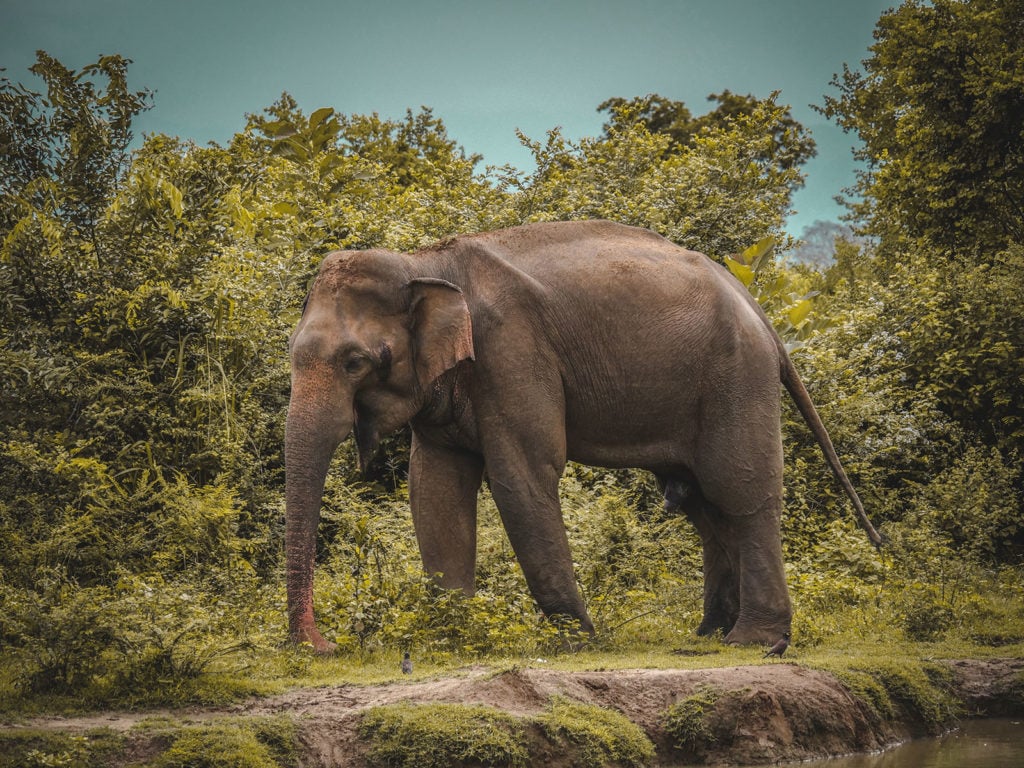
Day 3: Kandy to Ella
Today we will be journeying from Kandy city to the mountainous town of Ella. Ella is a small town at an elevation of 1,041 metres, surrounded by tea plantations and cloud forests.
The best way to travel to Ella is via train.
The Kandy to Ella Train Ride
The Kandy to Ella train ride is often referred to as the most beautiful train ride in the world. It was the part of the 10 day Sri Lanka itinerary that I was most looking forward to and it didn’t disappoint. You can read about my experience on the Kandy to Ella train here.
The earliest train from Kandy to Ella is at 8:47am. The journey takes a whopping 7 hours, and that’s assuming there are no delays (delays are likely. My journey had a 1 hour delay due to bad weather). The estimated arrival time in Ella is 3.15pm. This train is known as the Podi Menike train which is a bright blue train made by the Chinese.
You can opt to take the slightly later train instead which leaves Kandy at 11:10am and arrives in Ella at 6:23pm which is known as the Udarata Menike. This is also a vibrant blue Chinese train. It is worth considering that it may be more challenging to navigate from Ella station to your onwards accommodation in the darkness. I’d therefore recommend the earlier train.
It is advisable to arrive at Kandy station with ample time before the train is due to the depart – 30 minutes is a good amount of time.
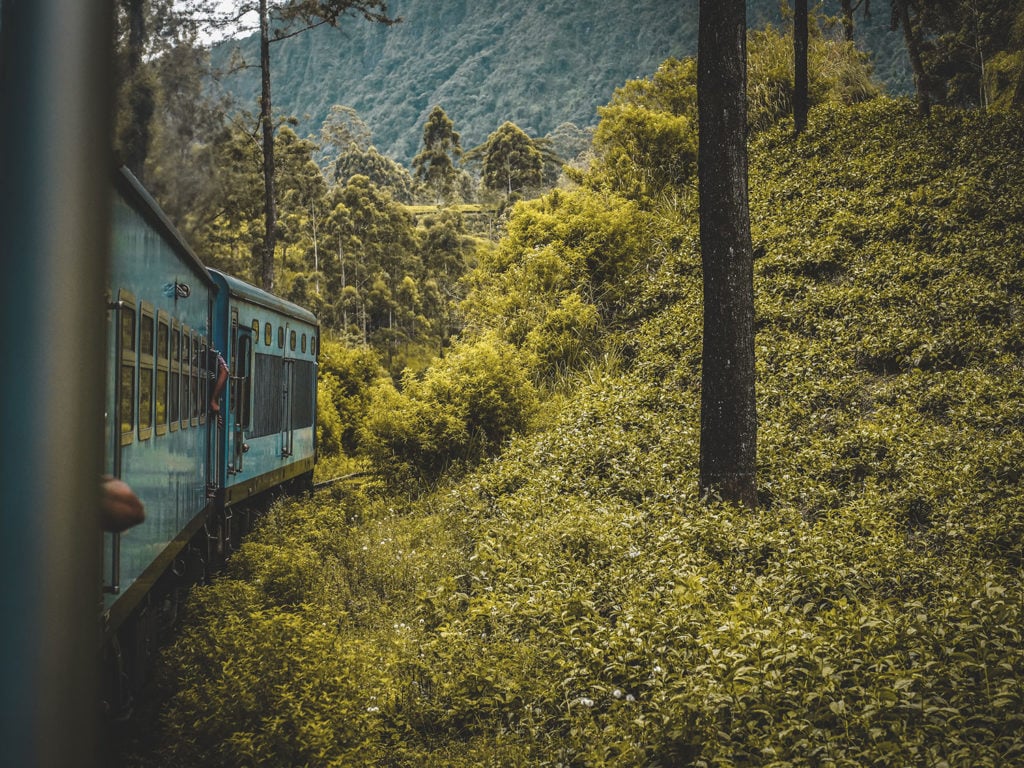
The train journeys through Sri Lanka’s highlands, passing through countless tea plantations and yielding stunning views of the countryside. If you are curious to see more about the kind of views you can expect, I have two photo essays of the journey: here and here.
The best train class to soak up the experience is second class. The open windows allow stunning views of the passing surroundings. If you get the choice, sit on the right side of the train. The views on this side are far superior to those on the left until the train passes through Nuwara Eliya. Once through Nuwara Eliya, the train should empty considerably and you should be able to shuffle over to the left side of the train to keep up with the amazing views.
Where to stay in Ella
There are countless guest houses and hotels nestled in the hills surrounding Ella town. I stayed in a homestay called ‘Chamodya Homestay’ which can be booked through Agoda or Airbnb.
Chamodya Homestay was by far my favourite accommodation that I stayed at during my Sri Lanka trip. It is superbly located with views of Ella Rock, Ella Falls and Little Adam’s Peak and is a short walk away from Ella town. Our host was extremely welcoming and cooked us delicious meals. Breakfast was included in our stay.
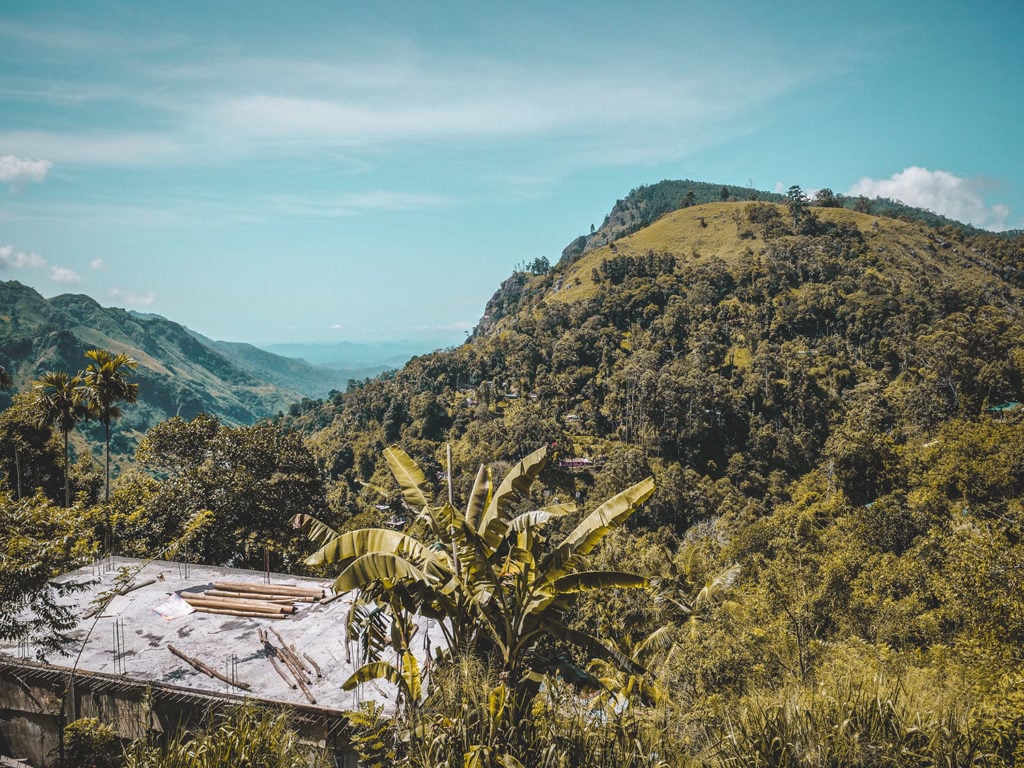
Day 4: Ella
As the train from Kandy arrives late in the afternoon, it is advisable to book to stay in Ella for 2 nights in order to make the most of this picturesque town. This leaves a full day to explore Ella.
Things to do in Ella
Despite its small size, there is a whole host of activities to enjoy in Ella town. There are countless hikes you can take, the most popular being climbing Ella Rock (roughly a 4 hour trek) and climbing the smaller Little Adam’s Peak (roughly 2-3 hour trek).
If climbing mountains isn’t your thing, a visit to the iconic Nine Arch Bridge may be more up your street. This stone railway bridge arching over tea plantations is beautiful. The bridge is 91 metres long and stands 24 metres high. The bridge is just out of town. Although it is possible to walk to it from Ella town, a 10 minute tuk-tuk ride may be easier.
There are countless waterfalls in the area which you can visit including Ravana Falls and the Kital Ella Waterfall. It is worth noting that there is an entrance fee to visiting Ravana Falls.
Ella Town itself is vibrant with numerous restaurants and cafés that you can enjoy. There are several shops as well, perfect for purchasing clothing and souvenirs.
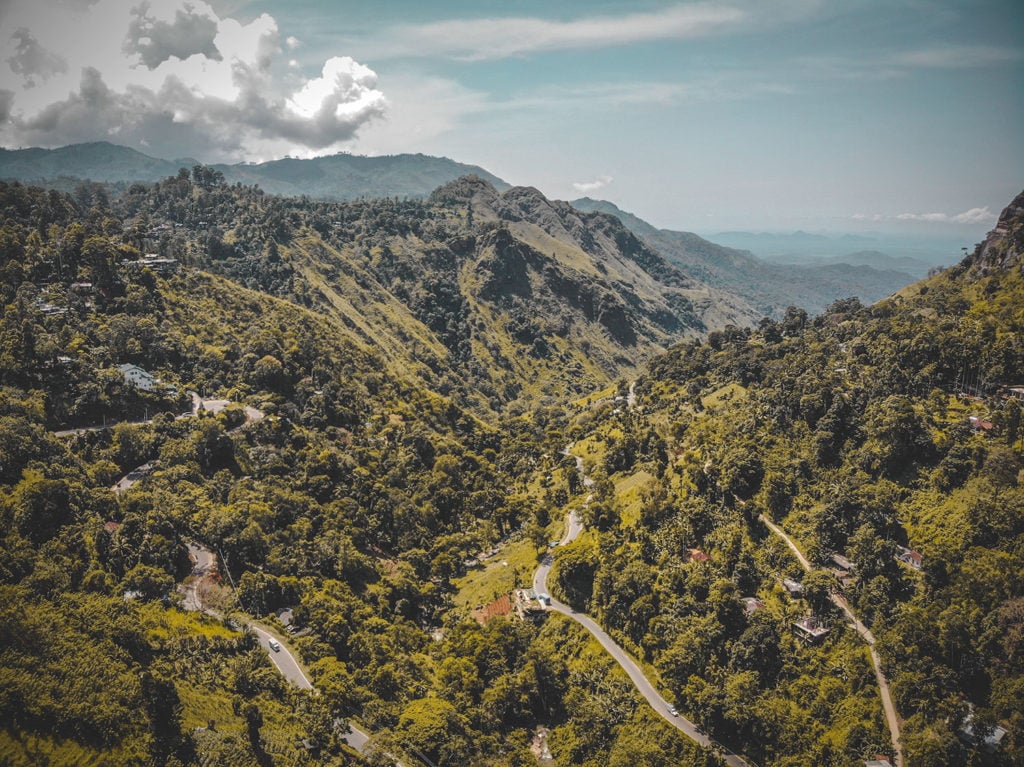
Day 5: Ella to Udawalawe
Hop in a taxi and drive south for roughly 2 hours to the town of Udawalawe. The drive is beautiful, taking you out of Sri Lanka’s highlands.
Udawalawe town is famous for being the entry point to Udawalawe National Park, dubbed as one of the best places on earth to view the Asian elephant in the wild. There are roughly 700 elephants in the park, an extremely high density compared to other national parks.
Where to stay in Udawalawe
There are numerous lodges, hostels and cottages to stay at, most at a similar price and specification. Prices range from £10 a night to £60 at the higher end.
I stayed ‘The Countryside Udawalawe’, a modest complex consisting of a handful of cottages as well as a restaurant. My cottage was modern and stylish and even came with air-conditioning. The price was £25 per night, making it more expensive than the homestays I had been staying at so far in my trip.
Many accommodation options come with the option of booking a safari through them and some will even arrange transport to and from the accommodation.
Arriving in Udawalawe
The drive from Ella to Udawalwe is fairly relaxed, allowing for time to be spent on either side of the journey. I personally enjoyed arranging my taxi journey for lunch-time, allowing me time to have a leisurely morning in Ella and then a relaxed evening in Udawalawe.
If you arrive before the afternoon, you could arrange to go on an evening safari.
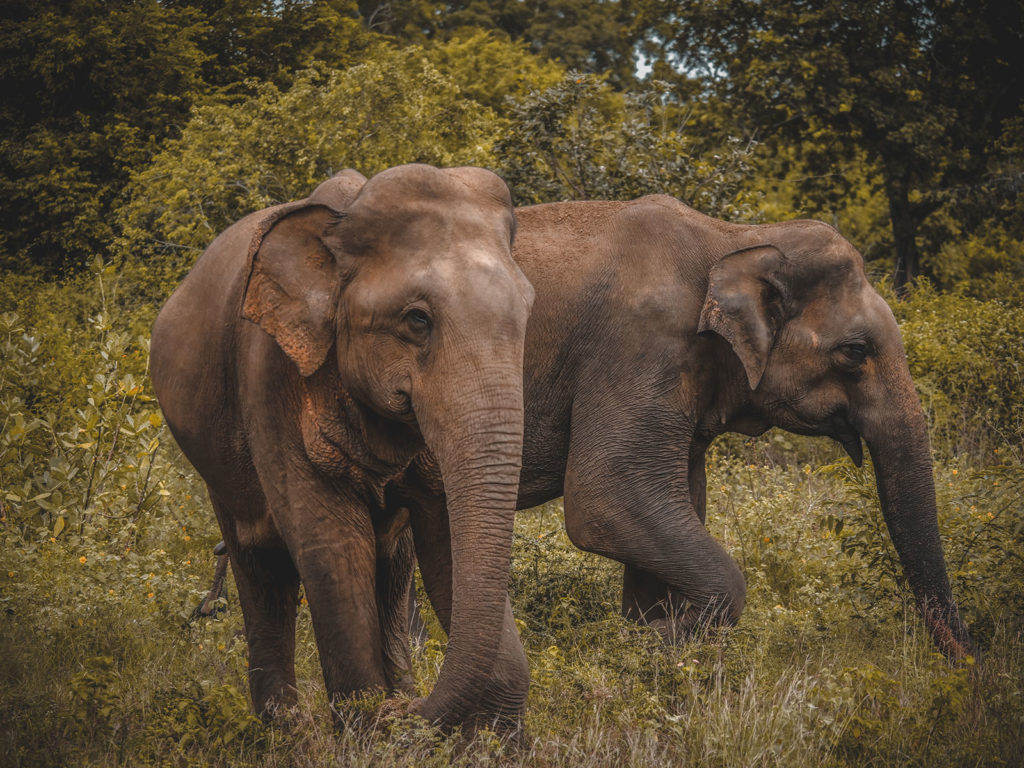
Day 6: Udawalawe
The best time of day to go on safari is in the morning. Therefore if you really want to make the most of wildlife viewing in Udawalwe National Park, it is recommended you hop on an early morning safari.
Safaris last for several hours. Although wildlife viewing cannot be guaranteed, there is an extremely good chance of viewing some elephants in Udawalwe national park. Immediately upon entry to the park I saw my first elephant. It turned out to be the first of countless! As well as elephants I managed to spot wild boar, jackals, crocodiles, deer, two types of monkey, countless birds and more. You can read all about my Udawalwe safari experience here.
In the afternoon you can enjoy a visit to the Elephant Transit Home, a project that looks after orphaned elephants before eventually releasing them back into the wild in Udawalwe National Park. You can visit the elephants at feeding time which is every 3 hours (9am, 12pm, 3pm, and 6pm).
I touched upon the subject of elephant orphanages when talking about Pinnawala in Kandy and the bottom line is that not all sanctuaries and orphanages are created equal. There are some genuine orphanages that treat their animals well and contribute to conservation. It can just be tricky to weed out the good ones from the bad ones.
There are several signs that the Elephant Transit Home is ethical. First of all, there is no contact between the elephants and visitors. If you visit the Transit House, you watch the elephants being fed from a distance. Secondly, none of the animals are ever chained and are free to roam about how they please. Finally, once the baby elephants are old enough they are released back into the wild.
Research truly is key to making sure that you support ethical causes.
If you’d rather have an afternoon safari, then you can always visit the Elephant Transit Home in the morning and jump in your safari vehicle for the late afternoon. Although morning safaris are recommended, afternoon safaris can be just as good. In fact, I actually went on an afternoon safari (not a morning one – I enjoy lie-ins) and was blown away by the quantity of wildlife I encountered.
After your day of activities, return to your accommodation for the night.
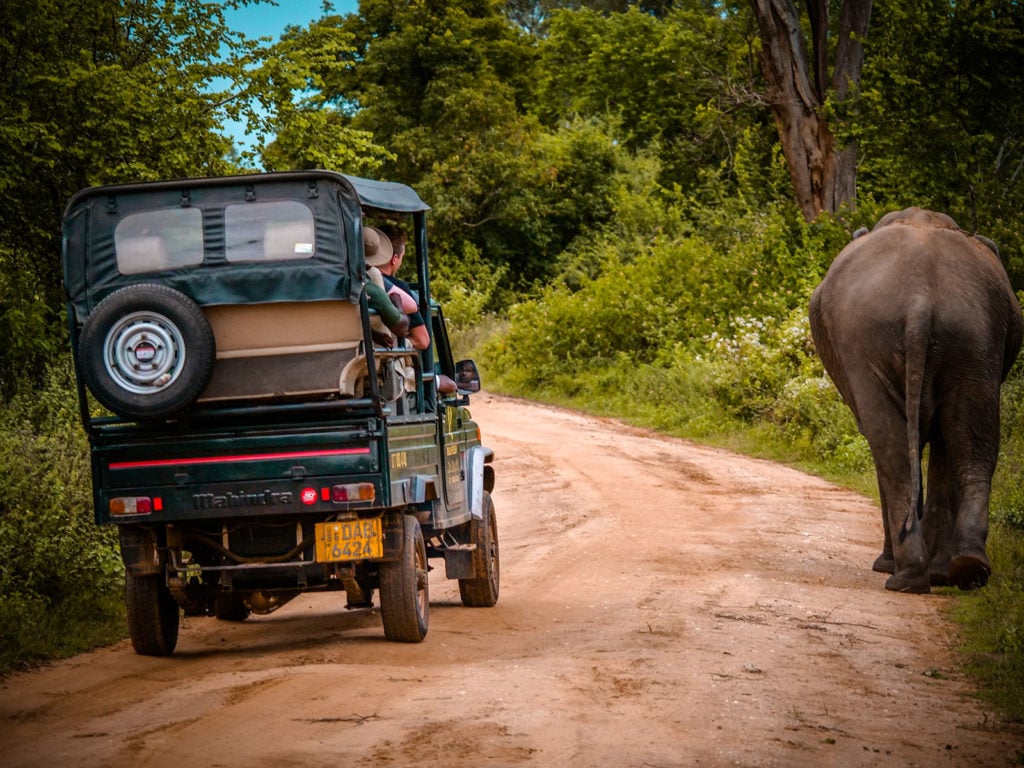
Day 7: Udawalwe to Hiriketiya
Take a taxi south to Sri Lanka’s coastline. Hiriketiya bay is a beautiful horseshoe-shaped beach and a real hidden gem, best-known for its incredible surf. It takes roughly 3 hours to reach the beach from Udawalawe.
Where to stay in Hiriketiya
There are numerous hostels and guesthouses in the area surrounding the bay. I stayed in a guesthouse right by the path that leads to the beach called ‘The Corner’. It was good in regards to its proximity to the beach but lacked views and was a little far out of down. Staying by Dikwella beach (the neighbouring beach) may be a better option as there is more choice in terms of shops and restaurants.
Things to do in Hiriketiya
Walk down to Hiriketiya beach. There are numerous restaurants on the beach, each with a gorgeous view of the waves. The beach is also a great destination to surf, if that’s what you are into.
Hiriketiya is one of the most beautiful beaches I have ever visited. The golden sand is fringed by lazy palms making the beach feel private and untouched.
You can also pay a visit to Dikwella beach which is far larger but just as beautiful. There are countless restaurants along Dikwella beach and just behind it is Dikwella town.
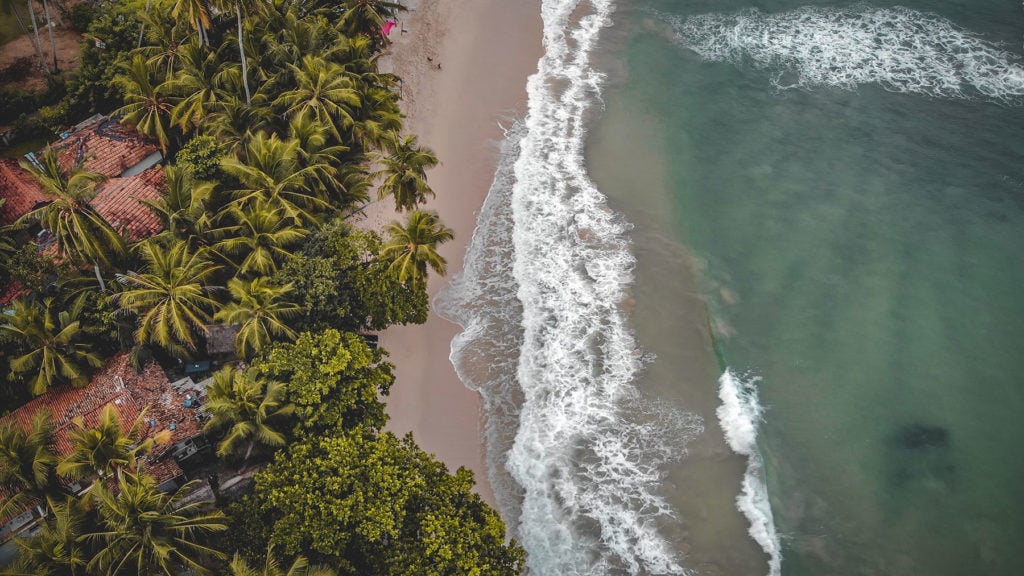
Day 8: Hiriketiya to Mirissa
A one hour taxi or tuk-tuk ride along the coastline takes you to Mirissa beach, one of the most popular beaches along Sri Lanka’s southern coastline. This beach is famed for its beach-front restaurants and whale watching just off the coast.
Where to stay in Mirissa
There are so many options when it comes to accommodation in Mirissa, from hotels to hostels, homestays to guest houses. I stayed in one of the many guest houses which was a 15 minute walk from the beach. Search for an accommodation option that is a short walk away from the town and beach. Prices for guest houses range from £13 to £50 per night, most of which being between £20 – £30 per night and come with breakfast included.
What to do in Mirissa
My absolute favourite thing to do in Mirissa is eat at the Dewmini Roti Shop. This quaint restaurant nestled on one of Mirissa’s backroads was recommended to me by my guest house owner and my goodness the food is incredible! I can indeed agree with its name – it is the No1 Roti shop in my eyes.
Take a walk down Mirissa beach and enjoy the sunshine. There is a reason why Mirissa is popular and it’s that the beach is very beautiful! However, the restaurants lining the beach cater to tourists and as a result I didn’t find the food as inspiring as some of the other places I have eaten in Sri Lanka. As a result, I’d probably avoid them.
If you visit Mirissa between November and April, take part in a whale watching excursion where you can spot whales and dolphins.
Other popular activities in Mirissa include visiting ‘coconut tree hill’ (to the west of Mirissa. This can easily be located using Google Maps) and ‘Secret Beach’, a quiet beach which most tuk-tuks should be able to navigate you to.
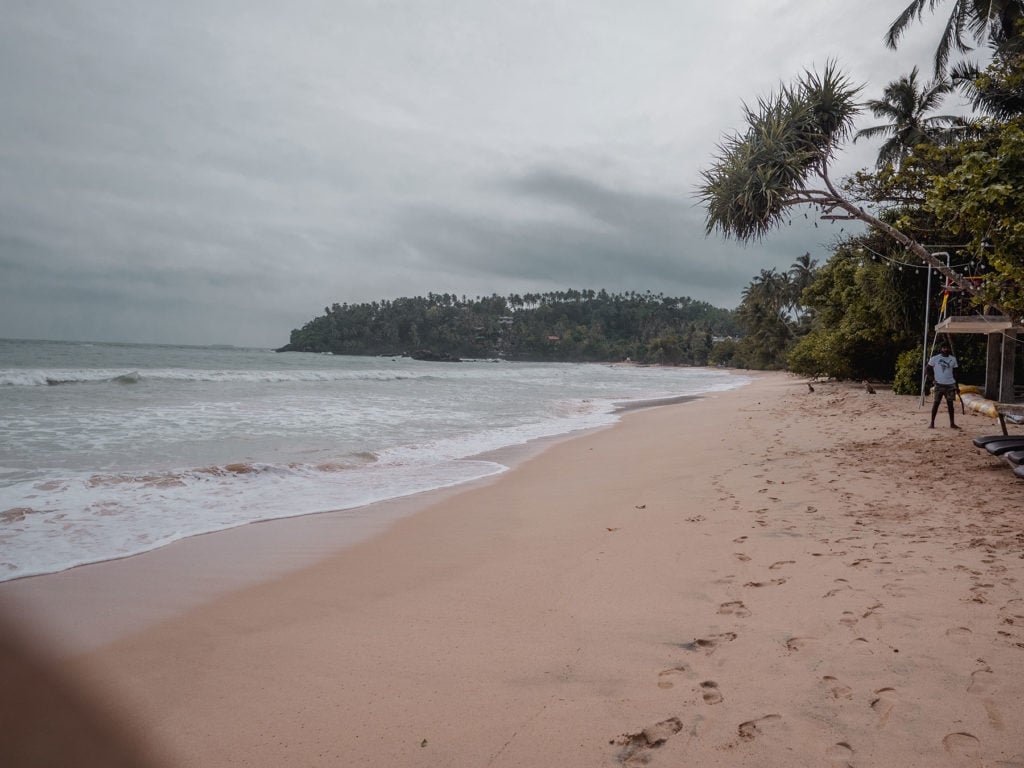
Day 9: Mirissa to Bentota
Jump in a taxi and travel to Sri Lanka’s west coastline to the town of Bentota, a couple of hours south of the capital of Colombo. Bentota is perched upon the coast with a beautiful stretch of golden sand known as Bentota beach. Further inland is Bentota river, a vast river surrounded by lush forests.
The journey from Mirissa to Bentota takes around 2 hours.
Where to Stay in Bentota
Bentota is an area of natural beauty from the beach to the river. Each part of the area has something different to offer.
High end hotels can be found along Bentota’s coastline with prices ranging from £50 a night all the way up to £1.5k per night. Generally, prices are cheaper the further inland the accommodation is located.
Guest houses and home stays are also an option with prices ranging from £15 to £100 a night depending on the specification.
In Bentota I stayed in a homestay along the river for £21 per night. You can find the homestay I stayed at here. The room was comfortable and clean with a large double-bed and an air-conditioning unit. My experience with the host was great; he was incredibly welcoming and hospitable, making recommendations for what to do in Bentota as well as offering a home-cooked meal. It was also wonderful to meet his family. This is a fantastic option if you want to have an authentic experience.

What to do in Bentota
Bentota beach is often referred to as one of the most beautiful beaches in the whole of Sri Lanka. You can take a stroll through the soft white sand or even a snorkel in the ocean. Hotels and restaurants can be found lining the beach which you can visit for a bite to eat or a dip in the pool.
The Bentota river is another of the area’s key attractions. The river is lined by precious mangrove forests which are a haven for wildlife. You can take a boat safari along the river.
You can read more about what to to do in Bentota here.
Day 10: Bentota to Negombo
For your final day in Sri Lanka journey back to Negombo, the city in which the international airport is situated. The drive should take 2 or 3 hours via taxi. Arrive in Negombo in good time before your flight.
Final Thoughts
And that concludes our 10 day Sri Lanka itinerary. I hope you found this guide helpful.
For more useful information to help you plan your backpacking trip to Sri Lanka, you can read this article on Sri Lanka travel tips.
Ellamckendrick.com is a free online resource. If you have found this website useful for planning your adventures, you can show your support by buying me a coffee. Thanks so much!


Thanks for sharing! I’m considering a trip to Sri Lanka first time) the information you’ve provided is very useful!
So glad you found it helpful. I hope you have an amazing time!
Great article! We are thinking of going in February for a couple of weeks. You mention taking taxis for long distances. I was wondering around how much the cost was for these? You mentioned other costs but I didn’t see anything for this. I’m trying to make a budget. Thanks in advance.
Nicola 😊
@Nicola, I would also be interested in this answer! It seems like a lot of driving.
Thanks very much.
Loved this! Considering this for ocotber 2026 with our 2 kids. I’ve read you can hire a driver who will do the whole trip with you, did you hear about this much?
Thanks
Fern
I am beginning to plan a return to Sri Lanka after many years, and this thorough information is invaluable. Thank you!!